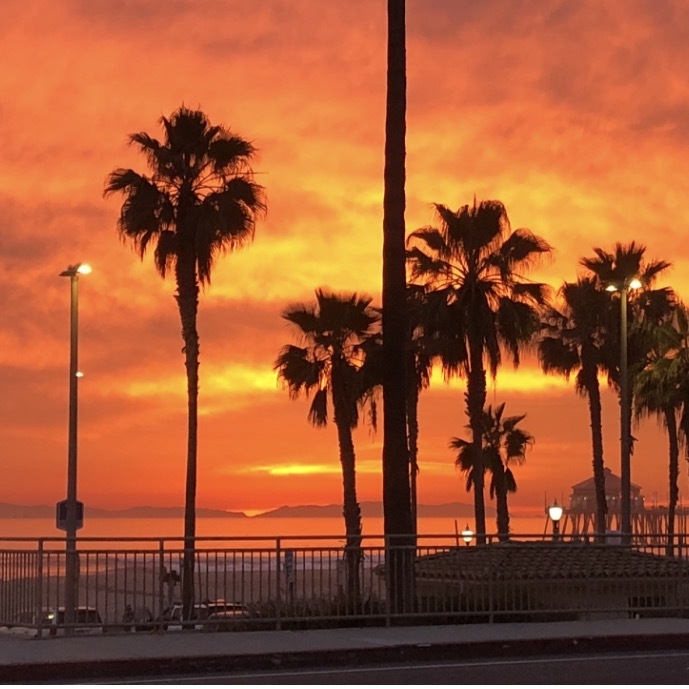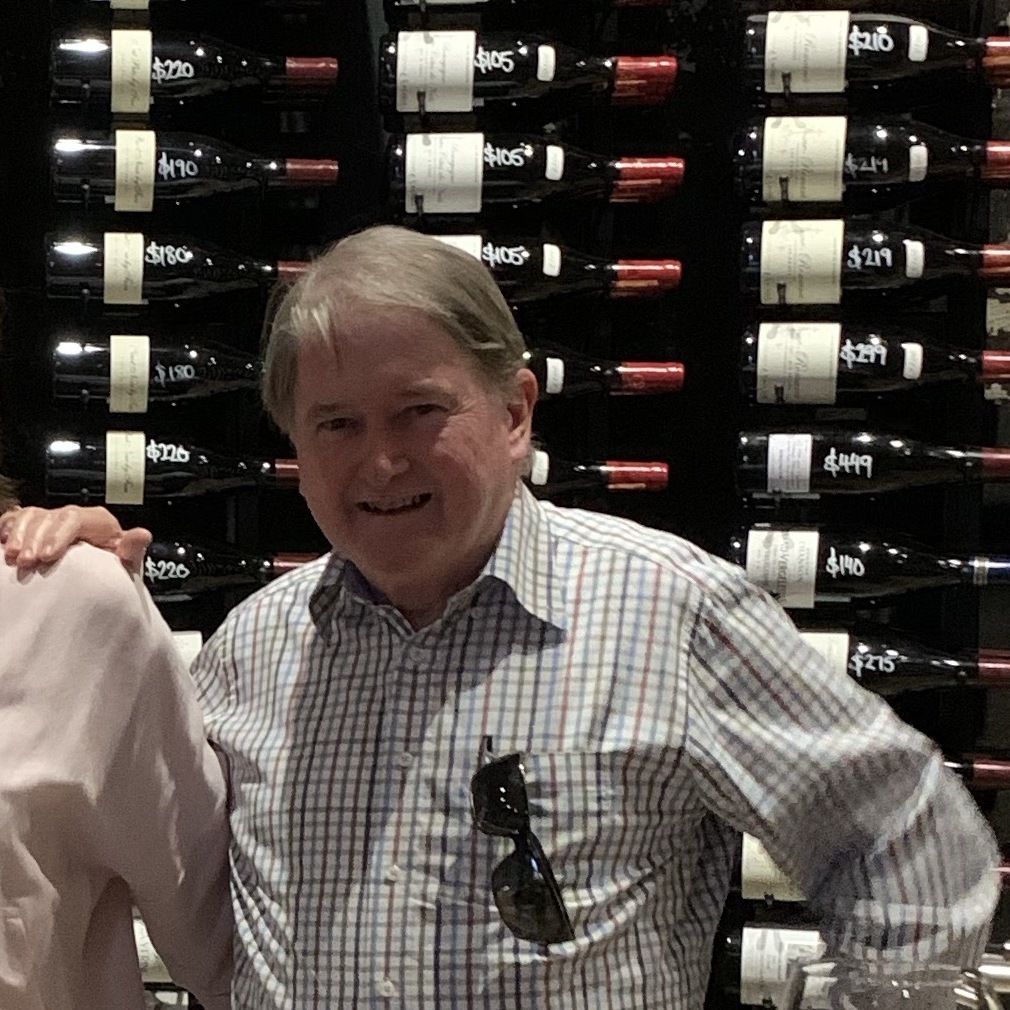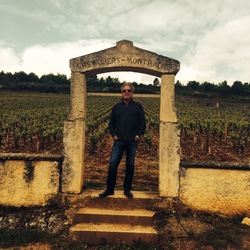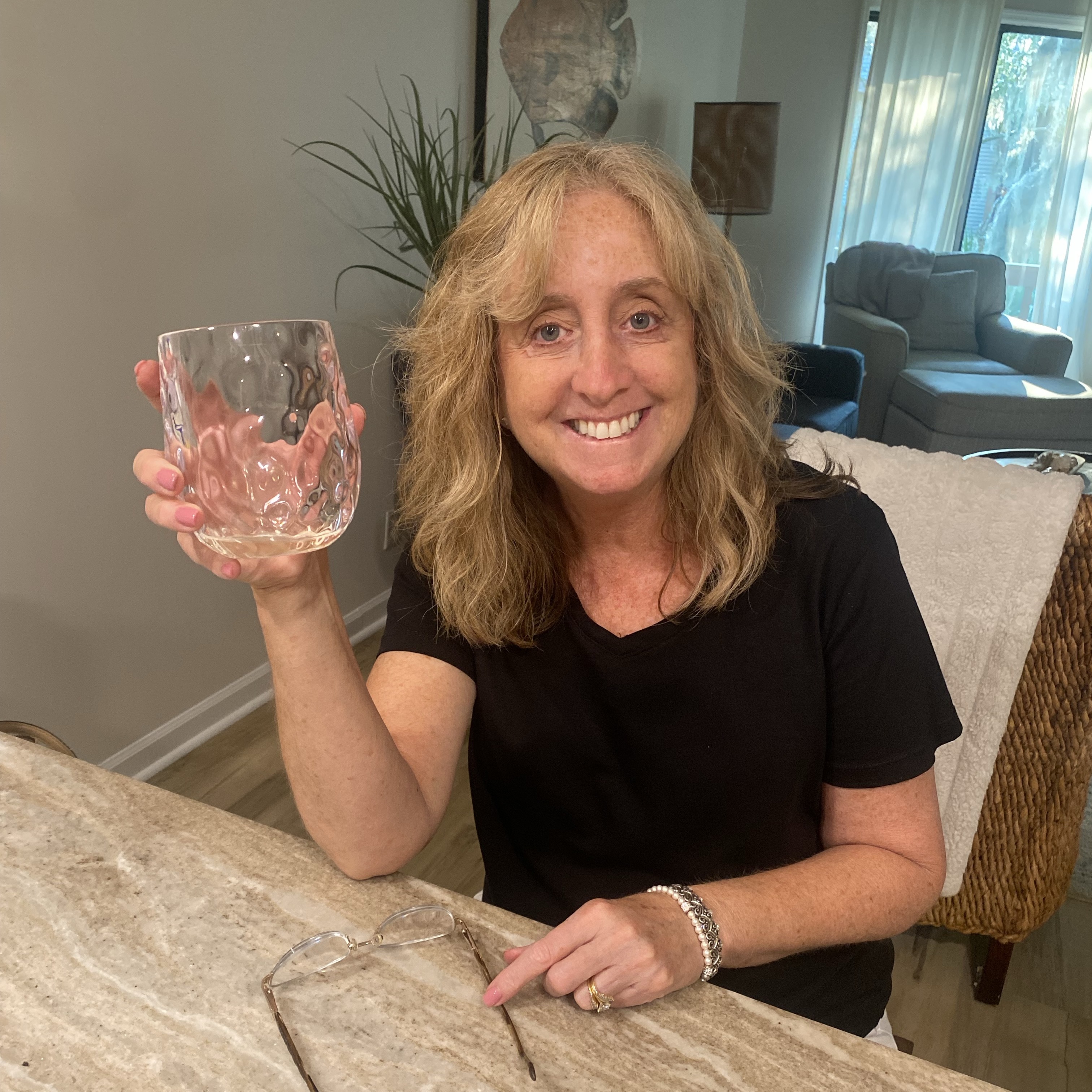Château Montrose
Château Phélan Ségur
Saint-Estèphe Red Bordeaux Blend 2009
Another generous gift for my Cabernet tasting matching the theme of 2009. I have not tasted this producer before mainly trying Cos and Montrose from Saint Estephe previously. It was more full bodied and silky than expected reflecting the vintage. Black and red fruits. A little lost for words after the Lafite to be honest. Most enjoyable however. — 5 years ago
Domaine Armand Rousseau
Chambertin Clos de Bèze Grand Cru Pinot Noir 2008
Une bouteille qui a pris du temps à s’ouvrir.
Un nez plus discret au départ. Des fruits rouges frais d’une belle pureté avec des épices assez prononcées. Beaucoup de corps et une acidité bien présente qui me laisse croire que le vin va encore
s’améliorer. Le vin devrait être plus expressif dans 5-8 ans. Une belle et longue finale. Les 2 Rousseau ont souffert de se retrouver dans une vague avec le Montrose. — 7 years ago
Domaine Montrose
Bernard et Olivier Côtes 2015
Would drink this any day! — 7 years ago
Domaine Montrose
La Balade des Lézards Vin de Pays des Côtes de Thongue Cabernet Sauvignon Syrah 2013
Trevligt, koncentrerat, lite animaliskt och mörkt bärigt. — 8 years ago
Château Cos d'Estournel
Saint-Estèphe Red Bordeaux Blend 1991
Is there any meal better than steak (Ribeye) and well aged Claret? This is another 1991 Bordeaux experiment of mine. 1991 was a vintage with horrible frosts and a less than favorable growing season, right? A vintage critically panned. This is my 3rd recent 91 from a good producer. And again, it didn’t disappoint. Like 97 and 07, it’s better with the right bottle age than young. Magic evolution happened in the bottle way down the road. This 91 is in great form with a fair amount of life ahead of it. On the nose; a little ripe fruit funk, wonderful dark & lighter red cassis, ripe blackberries, dark cherries, poached strawberries, plums, hues of blueberries, black raspberries, dry cranberries, vanilla, light cinnamon, rich, black turned earth, cedar, soft leather, dry stones, dry top soil, notes of dry herbs and fresh & dry red flowers. The body/palate is medium, round, ripe & still fresh. The tannins nearly completely resolved. Ripe, floral fruits of; blackberries, dark cherries, poached strawberries, plums, hues of blueberries, black raspberries, dry cranberries & half cooked rhubarb. Vanilla, light cinnamon, touch of clove & nutmeg, rich, black turned earth, cedar, soft leather, dry stones, dry crushed rocks, dry top soil, notes of dry herbs, a little band-aid and fresh & dry red flowers. The acidity drips over the palate and the long, well balanced, still structured, nice tension, good length finish lasts over a minute. Again, love & appreciate the 12.5% alcohol. What a beauty with and without the steak. Next time you’re in your fine wine retail shop and see a quality producers 91 that’s been well stored, buy it and have it with a Ribeye. Photos of; their exotic Estate, Chateau interior, newer barrel room and their vines as viewed from the front of the Chateau that are across the road. Producer notes and history...Cos d’Estournel has a long distinguished history in the St. Estephe. Louis Gaspard d’Estournel, gave his name to the estate after founding in 1811. It did not take long before Cos d’Estournel became famous with wine lovers and royalty all over the world. In those early days, Cos d’Estournel did not sell through Negociants. The owner preferred selling his wine directly to his customers. In fact, Cos d’Estournel was exported to numerous countries across the globe, with a large portion of the production being sold to India. It was that connection to India that inspired much of the unique, east Indian design we see at Cos d’Estournel today. Cos d’Estournel was one of the first Bordeaux Chateaux’s to bottle, label and sell their own wine. This practice continued until the death of Louis Gaspard d’Estournel in 1852. If you’re at the property, the statue on the bench in the front courtyard is of the founder, Louis Gaspard d’Estournel. The Estate was then purchased by an owner that sold their wines on the Place de Bordeaux using the negociant system. If the Chateau was not selling their wines through the negociant system, it would never have been included in the 1855 Classification. Imagine that! So, it turned out to be a fortuitous decision. Cos d’Estournel was sold to the Charmolue family owners of the neighboring Estate of Chateau Montrose. They continued to own the estate until 1917, when it was bought by Fernand Ginestet. This purchase was the beginning of the next major step in the development of Cos d’Estournel. Decades later, the grandchildren of Fernand Ginestet, Jean-Marie Prats, Yves Prats and Bruno Prats took over ownership and management of Cos d’Estournel. In 1995, Bruno Prats sold the property to the Merlaut family, owners of the Taillan Group. The next era in the development of Cos d’Estournel took place in 2000, when Cos d’Estournel was bought by the industrious and wealthy Michel Reybier, who earned his fortune in the food industry. Michel Reybier hired the son of Bruno Prats, Jean-Guillaume Prats to manage Cos d’Estournel. Things further improved with the efforts of Jean-Guillaume Prats who helped design the most modern wine making at that time. A complete renovation of Cos d’Estournel took place in not only the wine making facilities and cellars, but in parts of the Chateau as well. While the wine making facilities are completely modern with their 100% gravity design, the outward appearance retained the original design and feeling that has always been a part of Cos d’Estournel. On October 15, 2012, Jean Guillaume Prats announced he was leaving Cos d’Estournel to join LVMH (Pichon Baron). Jean Guillaume Prats was replaced by Aymeric de Gironde. Following the departure of Aymeric de Gironde in 2017, the owner, Michel Reybier took over managing the Estate. What makes the remodel special is that the cellars of Cos d’Estournel are entirely operated by gravity. There are no pumps of any kind to force the wine. The purpose is to allow a gentleness to the wine and improve its purity and allow for the expression of their terroir. It set a new benchmark for cellars not only in the Left Bank, but in all of Bordeaux. Perhaps, the most inventive part of the cellars is the four 100 hectoliter lift tanks or wine elevators that replace the pumps used in the traditional pumping over and the racking off processes, which introduce air and often destabilize the marc. From the moment the grapes arrive, everything travels by the flow of gravity. Jean Guillaume Prats called this process a “pumpless pump over.” The 91 hectare vineyard of Cos d’Estournel is planted to 65% Cabernet Sauvignon, 33% Merlot, 1% Cabernet Franc and 1% Petit Verdot. The vineyard is located extremely close to the border between Pauillac and Saint Estephe at the southern tip of the Saint Estephe. The Estate has very old Merlot vines as well, which date back more than 100 years. Part of the terroir is situated on the hill of Cos, which is at a high elevation for the Medoc at 20 meters. They also make a second wine called Pagodes de Cos. This is a great wine to buy in very good vintages. Especially, if your budget prohibits you from purchasing their first wine. — 8 years ago

Domaine Montrose (Bernard et Olivier Coste)
Montrose Pays d'Oc Rosé Blend 2015
Lovely Rose, soft strawberry but very dry with a granite finish. Nice — 9 years ago
Mayacamas Vineyards
Napa Mountain Cabernet Sauvignon 1970
Served blind alongside what was later to be revealed as the 1970 Montrose. Our humble table was universally convinced the other wine was from Bordeaux and there was at least one that was adamant this was the legendary 1970 Mayacamas. What wasn’t up for debate was the nose, which was absolutely stunning. A melange of ripe, dried and desiccated dark and red fruits with dried flowers, leather, sweet tobacco and the prettiest baking spices your nose ever smelled on a Cabernet from California. It was almost Burgundian relative to the Montrose. This is a vinous wine with acid keeping it spry. And while it is likely to give “Ohhs and Ahhs” for years to come, it is so gorgeous right now that I wouldn’t hesitate to pull the cork and taste one of the most important wines in history while it still has its potency. This will be one of those wines that haunt me for years to come and I’m ever so grateful to have enjoyed it. A sublime pairing with Iberico de Bellota pork loin with harissa purée and ramps. — 2 years ago
Château Haut-Brion
Pessac-Léognan Red Bordeaux Blend 1990
Sylvain a remplacé son Mouton 86 par Haut-Brion 90. Un nez similaire au Montrose mais en moins profond et plus discret. En bouche le vin n’est pas aussi complexe et profond que je m’attendais malgré que celui-ci a de belles saveurs de fruits, de graphite et de cuir. La texture est soyeuse et la longueur est moyenne. Le vin me semble un peu sur la retenue. J’imagine que lui aussi souffre de passer
directement après Montrose. — 7 years ago
Château Calon-Ségur
Saint-Estèphe Red Bordeaux Blend 1996
On the nose, a touch of barnyard. Sweet & sour dark cherries, blackberries, black raspberries, baked strawberries and hues of blue fruits. Dry crushed rocks, dry stones, rich black turned, soft leather, cedar, underbrush, tobacco, light vanilla & clove, medium spice, limestone, fresh & withering dark red floral bouquet.
The body is just full. The tannins are soft, rounded, chewy & sticky and still have some teeth. The wine elegantly guides smooth over the palate...very little that pushes back. It’s still youthful but not as youthful as my expectation. Sweet & sour dark cherries, blackberries, black raspberries, baked strawberries and hues of blue fruits. Dry crushed rocks, dry stones, rich black turned, soft leather, cedar, underbrush, tobacco, some dry herbal notes, sweet tarry notes, light vanilla & clove, medium spice, powdery limestone, loamy clay & top soil, graphite, dark spice with lifting heat, fresh & withering dark red floral bouquet and haunting violets. The acidity is near perfect. The structure, tension, length are in a very place but, will still improve for another 15+ years. The long, finish is ripe, round, balanced and lasts minutes.
Photos of, the Chateau, Technical Director Vincent Millet, beautiful stainless steel tank room and their new barrel room.
Producer notes & history...historic records show that Calon Segur was in existence as far back as 1147, when it was owned by Monseigneur de Calon. He was an important Bishop in the community. This makes Chateau Calon Segur one of the very oldest properties in Saint Estephe. Eventually, the property came to be owned by Nicolas Alexandre de Segur. Hence where part of the name of the Chateau comes.
After passing through generations, the estate became the property of the famous Marquis de Segur. de Segur is an important figure in Bordeaux history, not only for his ownership of numerous top Bordeaux estates in that day but, he also owned Lafite and Latour. de Segur is credited with uttering the words that spawned the idea behind the heart shaped logo of Calon Segur. The story is that de Segur is quoted as saying: “I make my wine at Lafite and Latour, but my heart is in Calon.” This famous saying lives on the label of Chateau Calon Segur, where the drawing of a heart is prominently featured on the bottle.
Chateau Calon Segur was one of the original three Bordeaux vineyards in Saint Estephe. In 1825 Chateau Montrose was a forest without a single vine belonging to the massive Calon Segur estate. In fact, Chateau Phelan Segur was also once part of the vast Segur estate. The holdings of the Segur family were so large, they included what would later became Chateau Lafite Rothschild, Chateau Latour and Chateau Mouton Rothschild!
The more modern era by European standards began in 1894 when its Left Bank vineyards were purchased by Georges Gasqueton and Charles Hanappier. Hanappier was a large negociant at the time. The Gasqueton family managed the estate until 2012. Madame Gasqueton ran the estate until she passed away at the age of 87 in late September, 2011.
In July of 2012, Chateau Calon Segur was sold for 170 million Euros or 215 million US dollars. The buyer was a French Insurance Company, Suravenir Insurance. Jean-Pierre Moueix, the owner of Petrus and the massive negociant company Duclot also took a minority stake in Chateau Calon Segur.
Since taking over Calon Segur, they started renovating the property with the focus on the wine making facilities. They followed a trend to vinify on a parcel by parcel basis. The estate replaced their older vats with new stainless steel tanks that vary in size and number to match the size of the various vineyard parcels.
The new tanks accompany a completely new vat room as well with everything moving completely by gravity. The new tasting room was remodeled as well. The renovations were completed in 2016.
Their cellars also needed work. Immediately after closing, the new owners began an extensive replanting of the Calon Segur vineyard. There were a number of reasons they chose to do this. They needed to increase the level of vine density and add more Cabernet Sauvignon.
The extensive renovation of Chateau Calon Segur cost somewhere north of 20 Million Euros. Other changes, the new owners took full control and brought in Vincent Millet as the Technical Director.
The 55 hectares of Calon Segur are located just north of the small town of St. Estephe and are planted to 53% Cabernet Sauvignon, 38% Merlot, 7% Cabernet Franc and 2% Petit Verdot.
Chateau Calon Segur is one of the few walled in vineyards in the Left Bank. Calon Segur is also known as being the northern most Classified Growth in Medoc.
The terroir of Calon Segur is a blend of gravel, rocks, clay, sand and limestone soils on the surface with gravel that can be as deep as 5 meters. Underneath, you find marl, clay and limestone.
On average, the vines are 25 years of age. However, they have older vines that range in age from 45-60 years of age.
The vineyard of Chateau Calon Segur remains almost exactly the same as it did at the time of the 1855 Classification.
Since the remodel was completed, fermentation takes place in 70 conical shaped, stainless steel tanks that range in size from 25 hectoliters to 120 hectoliters. Vintages are now aged in 90% to 100% new, French oak barrels for up to 20 months.
Production of Chateau Calon Segur is around 20,000 cases per year. They also make a second wine, which was originally named Marquis de Calon. Now, the second wine is sold under the name of Le Marquis de Calon Segur.
There is also a third wine, which is sold under two names, La Chapelle de Calon, and St. Estephe de Calon Segur, which is produced from vines that mostly come from a specific plot with more limestone. — 8 years ago

Château Rieussec
Sauternes Sémillon-Sauvignon Blanc Blend 2001
Thanks @Jim Westby for this wonderful half bottle. As you said, this wine, like the 2000 Montrose, has "turned the corner." It had huge botrytis, super rich texture and textbook Rieussec bitterness to balance out the very ripe sweetness. I found lots of orange marmalade here, and a finish so long and powerful that I am almost still tasting it this morning! — 8 years ago

Chateau Khoury
Symphonie Bekaa Valley Red Blend 2009
Exceptional Cab /Merlot/ Can Franc blend from Lebanon in the style of a right bank Bordeaux. Reminds me of Chateau Montrose 2010, but 5 times cheaper — 3 years ago
Château Montrose
J.L. Charmolue Saint-Estèphe Red Bordeaux Blend 2000
Wow I don’t drink a lot of Bordeaux but this was for a very special birthday and a big bottle seems in order ... it lived up to all expectations ... filled with many savory aromas in flavors like mushrooms, beef jerky, soy sauce but then also the trademark graphite/pencil lead quality. At 19 still seemed to have some years left to go before peaking!
Happy 4th 🇺🇸 — 6 years ago
Tank Garage Winery
Montrose California Counoise Blend
Cherry, Cola, jammy — 7 years ago
Château Cos d'Estournel
Les Pagodes de Cos Saint-Estéphe Red Bordeaux Blend 2005
Is there anything better than Ribeye & Claret? From my perspective, no. This is the second wine from one of more prestigious Chateaus in St. Estephe. Bordeaux rule number 2, buy the hell out of good producers second wines in very good vintages, like 2005. You’ll get great wines at more affordable prices. Providing, you exercise patience; which is rule number 1. Decanted for 3 plus hours. On the nose, ripe; blackberries, dark cherries, black raspberries, baked strawberries, black plum & cherries pull up the rear. Incense, herbaceous character, anise, scorched dark earth, burnt ambers, anise, baking spices dominated by vanilla, black tea, black cherry cola, loamy dry soils, dry & fresh red florals with violets for days. It’s in a great phase with many years ahead. The body is full and round. The texture has you wanting more. It’s velvety and ripe. Tannins soft and powdery, around 65-70 resolved. The fruits are ripe & ruby...showing the excellence of the 05 vintage. Blackberries, dark cherries, black raspberries, baked strawberries, black plum & cherries pull up the rear. Incense, herbaceous character, anise, scorched dark earth, dry stones, leather, cigar with ash, burnt ambers, anise, baking spices dominated by vanilla, black tea, black cherry cola, loamy dry soils, dry & fresh red florals with violets for days. The acidity is dead on. The length, structure, length & balance is harmonizing like America on the album, “ Horse with No Name.” The long finish is; ruby, rich, elegant, round, beautiful and lasts a minute plus. Beautiful wine. 9.4 with the steak. 9.2 on its own. Photos of; Chateau Cos d’ Estournel, hosting/tasting area, private wine stock and barrel cellar. Producer notes and history...Chateau Cos d’Estournel has a long history in the appellation of St. Estephe. Louis Gaspard d’Estournel, gave his name to the estate after founding it in 1811. It only took a few years before Chateau Cos d’Estournel became famous with wine lovers and royalty all over the world. In the early days, the wines of Cos d’Estournel were not sold through the Negociant system. The owner preferred selling his wine directly to his customers. In fact, Chateau Cos d’Estournel was exported to numerous countries across the globe, with a large portion of the production being sold to India. It was that connection to India that inspired much of the unique, east Indian design we see at Cos d’Estournel today. Chateau Cos d’Estournel was one of the first Chateaus to bottle, label and sell their own wine. This practice continued until the death of Louis Gaspard d’Estournel in 1852. After his death, the estate was purchased by an owner that sold their wines on the Place de Bordeaux, using the negociant system. If the Chateau had not been selling their wines through the negociant system, it would never have been included in the 1855 Classification! Chateau Cos d’Estournel was sold to the Charmolue family, the owners of the neighboring Chateau Montrose. They continued to own the estate until 1917, when it was bought by Fernand Ginestet. The purchase was the next major step in the development of Cos d’Estournel. The next era in the development of Chateau Cos d’Estournel took place in 2000, when Chateau Cos d’Estournel was bought by Michel Reybier, who made his fortune in the food industry. Michel Reybier hired the son of Bruno Prats, Jean-Guillaume Prats to manage Cos d’Estournel. Things improved with the efforts of Jean-Guillaume Prats who helped design the most modern wine making facilities in the entire Bordeaux wine making appellation at the time. A complete renovation of Cos d’Estournel took place in the winemaking facilities and cellars. The wine making facilities are completely modern, using 100% gravity. On October 15, 2012, Jean Guillaume Prats announced he was leaving Chateau Cos d’Estournel to join LVMH. Jean Guillaume Prats was replaced by Aymeric de Gironde. Following the departure of Aymeric de Gironde in 2017, the owner, Michel Reybier took over managing the estate. In 2018, the estate released COS100, produced from their oldest Merlot vines that were 100 years of age. It was limited in production to a 100 Jeroboams, (3 litres) and 10 Balthazars (12 litres) and a few other sizes were produced from only 2 barrels of wine. The proceeds from COS100 go to the charity, Elephant Family, that is devoted to protecting and nurturing Asian elephants in their own, natural habitat. Cos d’Estournel’s new cellar is a joint reflection by the technical team, the architect Jean-Michel Wilmotte and Jean Guillaume Prats. It’s a marvel blend of simplicity and modern technology. Cos d’Estournel is unique to Bordeaux and the rest of world. What makes this special is that the cellars of Cos d’Estournel are entirely operated by gravity. There are no pumps of any kind to force the wine. The purpose is to allow a gentleness to the wine and improve its purity allowing for expression of their special terroir. It set a new benchmark for cellars not only in the Left Bank, but in all of Bordeaux. The new cellars at Chateau Cos d’Estournel include 72 isothermal cone shaped stainless steel vats. The vats are specifically designed for thermal inertia. The 72 vats have a wide range of capacities to correspond with the needs of each parcel of vines. The vats range in size from as small as 19 hectoliters all the way up to 115 hectolitres. 12 of the smaller vats that are designed to handle between 19 and 60 hectoliters that have two levels in each vat. In other words, this offers the technical equivalent of 24 separate vats. Each of the vats are double lined, which allows for more exact and temperature control. None of the vats use interior heat coils. Perhaps the most inventive part of the cellars is the four 100 hectoliter lift tanks or wine elevators that replace the pumps used in the traditional pumping over and racking off processes, which introduce air and often destabilize the marc. From the moment the grapes arrive, everything travels by the flow of gravity. Jean Guillaume Prats called this process a pumpless, pump over. What takes place is, the wine is released from the main vat where the skins remain. By gravity, the juice is then moved into smaller vats which are on wheels. These small vats are sent to the glass elevators where they are moved up one floor and returned back into the vat by gravity to cover the skins. At this point, the process is still unique to Chateau Cos d’Estournel. The wine production of Cos d’Estournel is labor intensive starting the moment the grapes enter their new facility. The berries travel through a tunnel that instantly lowers the temperature of the fruit to 3-5 degrees Celsius. This sudden chilling stops the loss of juice while also slowing oxidation. Next, the grapes are cold macerated at 7-9 degrees Celsius for about a week. Pump overs are done by gravity recycling. The juice from the top of the vat moves to the bottom of the vat entirely by gravity. The fermentation takes place at low temperatures to avoid over extraction or harsh tannins. The 91 hectare vineyard of Chateau Cos d’Estournel is planted to 65% Cabernet Sauvignon, 33% Merlot, 1% Cabernet Franc and 1% Petit Verdot. The vineyard is located close to the border of Pauillac and Saint Estephe at the southern tip of the Saint Estephe appellation. The vineyard has cultivated 84 hectares of vines. Even though the vineyard has been expanded over the years, the grape varietals planted here have remained consistent. The vineyard, located on the hill of Cos, has gentle elevations of up to 20 meters. On average, the vines are 35 years of age. However, the estate has very old Merlot vines as well, which date back more than 100 years. Part of the terroir is situated on the hill of Cos, which is at a high elevation for the Medoc at 20 meters. Cos d’Estournel is translated from old Gascon speech; which means the hill of pebbles. It describes the terroir along with clay, gravel, sand and limestone soil. However, there is a unique aspect to the soil at Cos d’Estournel, as you find more gravel and less clay here than you do at other neighboring vineyards. Because the fruit is grown close to the Atlantic ocean in a cool climate, Cos d’Estournel is often among the last of the properties in the Medoc to harvest. The vineyard is managed by teams and each team member is given 45,000 vines to look after. The vineyard, which is almost one large block, can be further divided into 72 separate parcels. — 8 years ago
















Scott@Mister A’s-San Diego
1986 vintage. 5 bottles tasted for a 1986 vintage BDX dinner @ Mister A's-San Diego. This was up against other 1986's Pichon-Lalande, Beychevelle, Gruaud-Larose, Montrose and Cos. Double decanted and tasted over 5 hours. Respectable sed. Effin pop and pour now. Right right now. The clear winner. So good with balance and enough fruit without having to reach or rationalize. If you're not able to access for 7-10 years, you should be okay. Delicious. 3.14.24. — 2 years ago